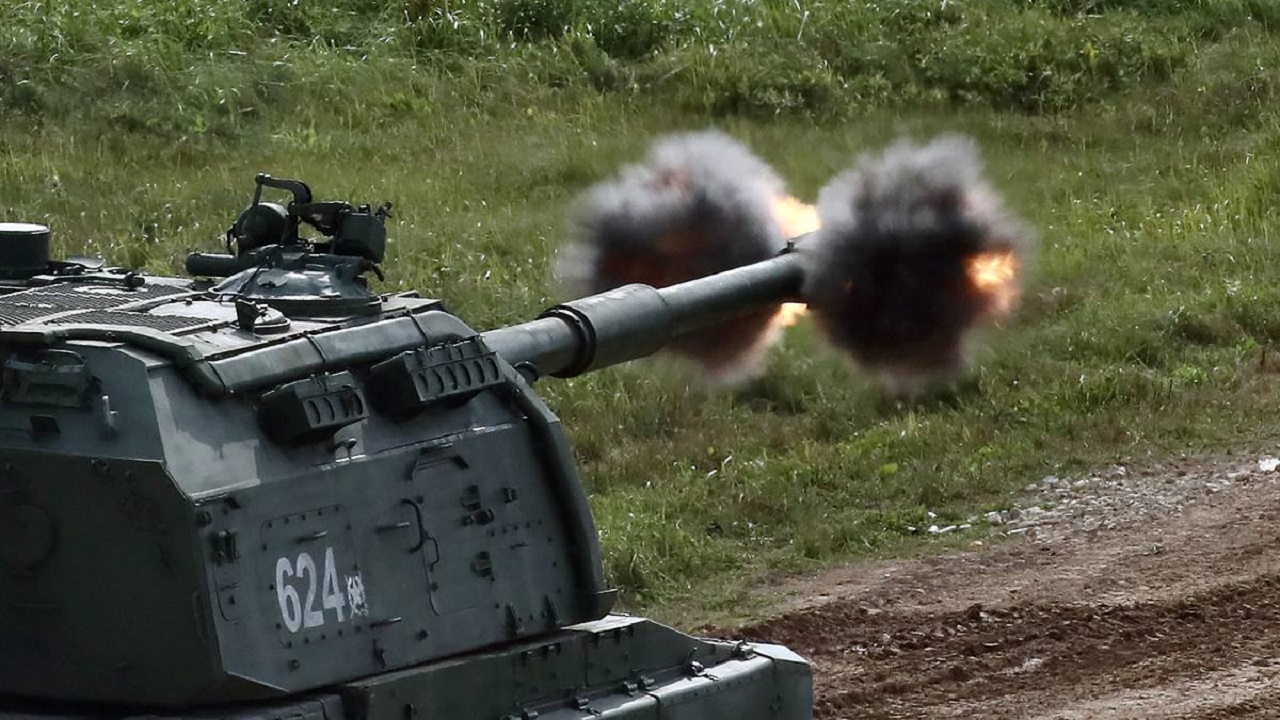As the Ukrainian Armed Forces (UAF) continue their counteroffensive in the Southern regions of the country and Russian troops attack around Kupiansk in the North, the battlefields recall those of World War I, when massed artillery fire was a primary tactic.
While the cannons of today are far more accurate and reliable, their employment is similar to those over 100 years ago in the carnage of the Western Front.
That is, to disrupt and degrade enemy defensive positions such as the large trench networks the Russians have dug as well as provide accurate and effective counter-battery fire to destroy enemy artillery which seeks to target advancing forces.
To effectively accomplish these missions requires ammunition– a lot of ammunition. So far this year, the Ukrainian Ministry of Defense (MoD) estimates they are firing 6,000 to 8,500 shells every day.
Supplying the Artillery Fight in Ukraine
The UAF has a major advantage when it comes to these artillery battles in the “Arsenal of Democracy” – huge stocks of 155mm artillery ammunition that the U.S. and other allies have been and continue to provide. To date, the U.S. alone has sent over 2 million rounds and is committed to providing more.
This week, Pentagon spokesman Brig. Gen Pat Ryder said the Department of Defense is “comfortable” that it will both be able to continue providing Ukraine with the necessary munitions while ramping up domestic production to replenish our own stocks. Currently, the U.S. makes approximately 24,000 155mm shells monthly, up from 14,000 when Russia invaded Ukraine in February of last year. The plan however, is “to [produce] over 80,000 a month over the following year.”
In order to achieve this goal, U.S. defense manufacturers are standing up entirely new fabrication lines to machine the metal shells, pack them with explosive ammunition, as well as creating propellant production to launch the completed armaments.
A Crucial Aid to Victory
As Ukraine carries out its Southern and Eastern counter-offensives, continued, effective employment of artillery assets will be crucial. Beyond tactical considerations in switching from a defensive to an offensive posture, Ukrainian planners must also bear in mind the logistical challenges. Husbanding their resources, such as ammunition, is one such consideration – even if the U.S. and allies are able to persist in the current levels of supply. Beyond just the shells, the UAF must be wary of the artillery pieces themselves whose barrels have a limited lifespan and, should that lifespan be exceeded, can explode with disastrous consequences.
Adding to these already daunting issues is the diverse array of equipment in use by the UAF. While “most countries have two or three different howitzer types in their land forces; Ukraine has 14.” This includes both NATO standard 155mm pieces as well as Soviet 152mm, getting the right parts and ammunition to each is a logistical nightmare.
Should the U.S. be able to ramp up production as planned and maintain supply to Ukraine, and should UAF logisticians and planners overcome the difficulties presented in getting those shells to the front, Ukrainian artillery may yet play a crucial role in achieving the type of decisive breakthrough so desired by the MoD. Regardless, the guns in Ukraine will not fall silent.
Maya Carlin, a Senior Editor for 19FortyFive, is an analyst with the Center for Security Policy and a former Anna Sobol Levy Fellow at IDC Herzliya in Israel. She has by-lines in many publications, including The National Interest, Jerusalem Post, and Times of Israel. You can follow her on Twitter: @MayaCarlin.
From the Vault
‘You Really Oughta Go Home’: F-22 Raptor Stealth Fighter Flew Under F-4 From Iran

